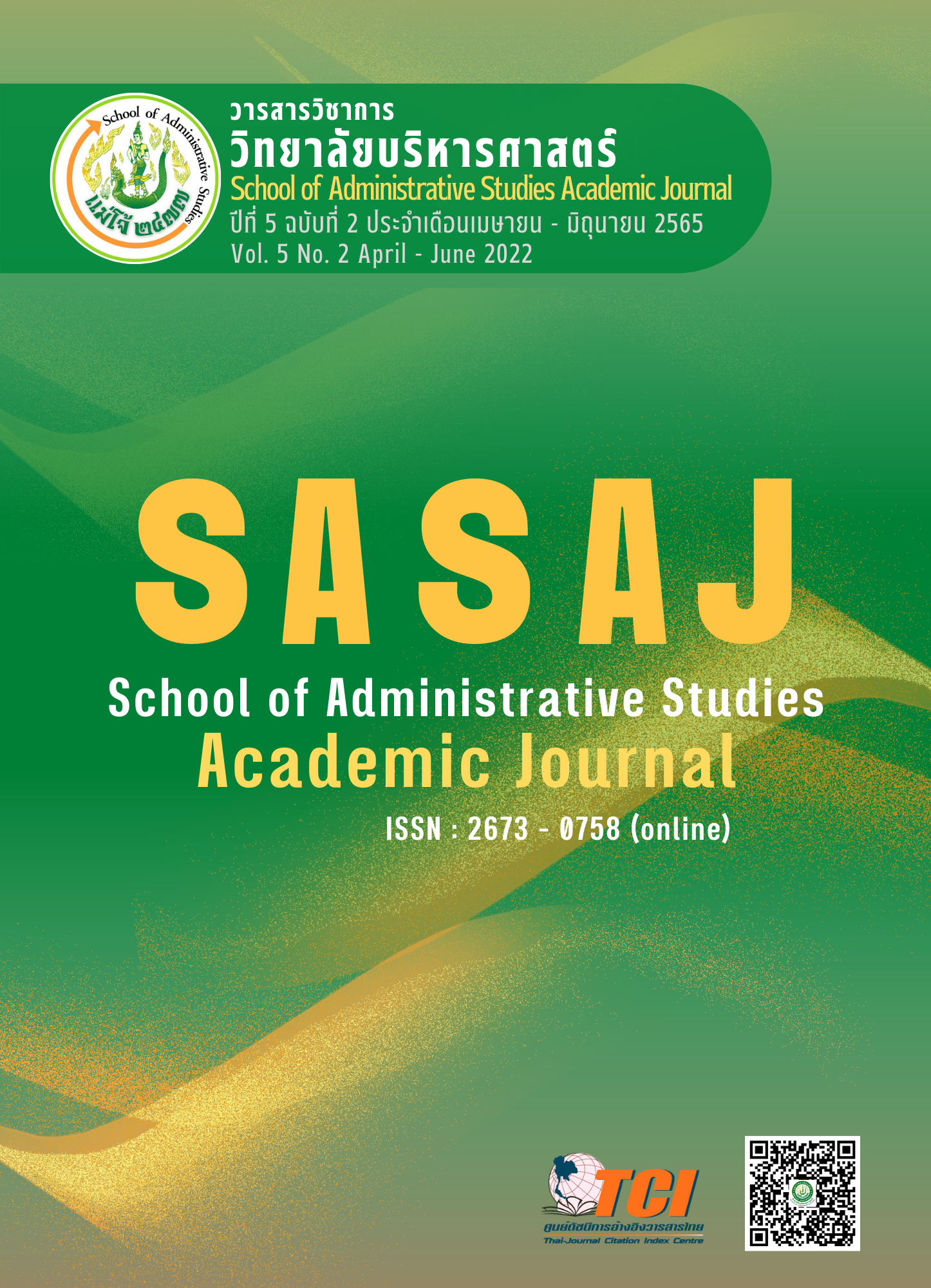กระบวนการขับเคลื่อนและพัฒนาเศรษฐกิจฐานรากเชิงสวัสดิการของเทศบาลเมืองแม่โจ้และเทศบาลตำบลป่าไผ่ อำเภอสันทราย จังหวัดเชียงใหม่
Main Article Content
บทคัดย่อ
งานวิจัยนี้มีวัตถุประสงค์ 1) เพื่อศึกษาบทบาทหน้าที่ของกลุ่มองค์กรชุมชนในการกระบวนการขับเคลื่อนเศรษฐกิจฐานราก เพื่อยกระดับคุณภาพชีวิตของสมาชิกในระดับครัวเรือนและชุมชนของกลุ่มองค์กรชุมชน 2) เพื่อศึกษากระบวนการพัฒนาศักยภาพของกลุ่มองค์กรชุมชน กระบวนการสร้างความร่วมมือของกลุ่มองค์กรชุมชนในการขับเคลื่อนและพัฒนาเศรษฐกิจฐานรากเชิงสวัสดิการ เป็นการวิจัยเชิงคุณภาพ เครื่องมือที่ใช้ในการวิจัย คือ แบบสัมภาษณ์กึ่งโครงสร้าง และการสนทนากลุ่มย่อย ผู้ให้ข้อมูลสำคัญประกอบด้วย ผู้แทนกลุ่มองค์กรชุมชน ผู้แทนหน่วยงานภาครัฐเอกชน ผู้แทนผู้นำท้องถิ่นท้องที่ ผู้แทนสถาบันการศึกษา ผู้แทนผู้นำศาสนา และผู้แทนภาคประชาชน รวมทั้งสิ้น 60 คน
ผลการศึกษาพบว่า กลุ่มองค์กรชุมชนส่วนใหญ่ก่อเกิดขึ้นตามนโยบายของรัฐบาลภายใต้การกำกับดูแลของหน่วยงานภาคราชการ ทำงานตามบทบาทหน้าที่ตามวัตถุประสงค์ของการจัดตั้งเพื่อให้บรรลุเป้าหมายของแต่ละกลุ่มมุ่งเน้นการสร้างความเข้มแข็งเฉพาะกลุ่ม และ ยังไม่ปรากฏว่ามีกลุ่มองค์กรชุมชนใดทำบทบาทหน้าที่ในการขับเคลื่อน และพัฒนาเศรษฐกิจ ฐานรากของชุมชนโดยตรง ในขณะเดียวกันก็ยังไม่มีการรวมกลุ่มองค์กรชุมชนแบบเป็นทางการในการเป็นฟันเฟื่องหลักในการสร้างความร่วมมือในรูปแบบบูรณาการในการขับเคลื่อนเศรษฐกิจฐานรากอย่างเป็นรูปธรรม
การพัฒนาศักยภาพกลุ่มองค์กรชุมชนให้มีความเข้มแข็งสามารถบริหารจัดการพึ่งพาตนเองได้ และสามารถเป็นที่พึ่งของประชาชนในชุมชน จึงมีความจำเป็นอย่างยิ่งที่นำมาสู่การสร้างกระบวนการพัฒนากลุ่มองค์กรชุมชนผ่านผู้นำและคณะกรรมการของกลุ่มโดยมีกระบวนการพัฒนาศักยภาพกลุ่มองค์กรชุมชน คือ 1) การค้นหาปัญหาความต้องการศักยภาพ 2) การออกแบบสร้างกระบวนการเรียนรู้เพื่อสร้างองค์ความรู้ 3) การจัดอบรมเชิงปฏิบัติการเพื่อพัฒนาศักยภาพกลุ่มองค์กรชุมชนผ่านผู้นำคณะกรรมการและสมาชิก 4) การออกแบบกระบวนการสร้างความร่วมมือเชิงบูรณาการเพื่อพัฒนาเศรษฐกิจฐานรากเชิงสวัสดิการเพื่อนำสู่การปฏิบัติให้เกิดมรรคเกิดผลต่อไป
Article Details

อนุญาตภายใต้เงื่อนไข Creative Commons Attribution-NonCommercial-NoDerivatives 4.0 International License.
ลิขสิทธิ์
เอกสารอ้างอิง
กระทรวงพาณิชย์. (2564). รายงานการศึกษาพัฒนาศักยภาพของวิสาหกิจชุมชน/วิสาหกิจเพื่อสังคมยกระดับเศรษฐกิจฐานราก. สืบค้นจาก http://www.tpso.moc.go.th/th/node/11312
โกวิทย์ พวงงาม. (2545). การเสริมสร้างความเข้มแข็งของชุมชน. กรุงเทพฯ : ม.ป.พ.
ฉัตรทิพย์ นาถสุภา. (2556). อนาคตสังคมไทย: ข้อคิดเพื่อพิจารณา (รายงานการวิจัย). กรุงเทพฯ: สำนักงานกองทุนสนับสนุนการวิจัย.
ทอแสงระวี ถีถะแก้ว. (2555). ยุทธศาสตร์การพัฒนาเศรษฐกิจชุมชนบนวัฒนธรรมเศรษฐกิจฐานรากในพื้นที่ฝั่งตะวันออกจังหวัดปทุมธานี. วารสารศรีนครินทรวิโรฒวิจัยและพัฒนา (สาขามนุษยศาสตร์และสังคมศาสตร์), 4(8), 39-52.
ทวีป บุตรโพธิ์. [ม.ป.ป.]. การขับเคลื่อนเศรษฐกิจฐานรากและประชารัฐ. สืบค้นจาก http://www.dsdw2016.dsdw.go.th/doc_pr/ndc_2560-2561/PDF/8410s/8410%E0%B8%99%E0%B8%B2%E0%B8%A2%E0%B8%97%E0%B8%A7%E0%B8%B5%E0%B8%9B%20%E0%B8%9A%E0%B8%B8%E0%B8%95%E0%B8%A3%E0%B9%82%E0%B8%9E%E0%B8%98%E0%B8%B4%E0%B9%8C.pdf
ทวีศิลป์ กุลนภาดล. (2550). การพัฒนาการมีส่วนร่วมของชุมชนในการวางแผนชุมชนเพื่อการบูรณาการสู่การวางแผนพื้นที่จังหวัดฉะเชิงเทรา. กรุงเทพฯ: สำนักงานคณะกรรมการการอุดมศึกษา และสำนักงานกองทุนสนับสนุนการวิจัย.
ยุภา ประยงค์ทรัพย์. (2554). การบริหารจัดการวิสาหกิจชุมชนเพื่อพัฒนาเศรษฐกิจฐานราก กรณีประเทศไทยและสาธารณรัฐประชาธิปไตยประชาชนลาว (วิทยานิพนธ์ปริญญาดุษฎีบัณฑิต). มหาวิทยาลัยราชภัฏสุรินทร์, สุรินทร์.
สนธยา พลศรี. (2545). เครือข่ายการเรียนรู้ในงานพัฒนาชุมชน. สงขลา: มหาวิทยาลัยราชภัฏสงขลา.
สถาบันพัฒนาองค์กรชุมชน. (2552). คู่มือการดำเนินการโครงการสนับสนุนการจัดสวัสดิการชุมชน. กรุงเทพฯ: สถาบันฯ.
สถาบันพัฒนาองค์กรชุมชน (องค์การมหาชน). (2559). คู่มือการส่งเสริมการพัฒนาระบบเศรษฐกิจฐานราก. กรุงเทพฯ: สถาบันพัฒนาองค์กรชุมชน (องค์การมหาชน).
สร้อยตระกูล (ติวยานนท์) อรรถมานะ. (2540). สาธารณบริหารศาสตร์ (พิมพ์ครั้งที่ 3). กรุงเทพฯ: สำนักพิมพ์มหาวิทยาลัยธรรมศาสตร์.
สังศิต พิริยะรังสรรค์. (2541). เศรษฐกิจชุมชนแบบพึ่งตนเอง ปรัชญา ฐานะและอนาคต ในเศรษฐกิจชุมชนพึ่งตนเอง: แนวความคิดและยุทธศาสตร์. กรุงเทพฯ:
กรมการปกครอง.
สุพานี สฤษฏ์วานิช. (2549). พฤติกรรมองค์กรสมัยใหม่ แนวคิดและทฤษฎี. กรุงเทพฯ: สำนักพิมพ์มหาวิทยาลัยธรรมศาสตร์.
สำนักงานคณะกรรมการพัฒนาการเศรษฐกิจและสังคม. (2562). ยุทธศาสตร์ชาติ พ.ศ. 2561 - 2580 / สำนักงานเลขานุการของคณะกรรมการยุทธศาสตร์ชาติ
สำนักงานคณะกรรมการพัฒนาการเศรษฐกิจและสังคมแห่งชาติ (พิมพ์ครั้งที่ 2). กรุงเทพฯ: สำนักงานฯ.
หทัยชนก คะตะสมบูรณ์. (2563). การพัฒนาศักยภาพของชุมชนเพื่อสร้างเศรษฐกิจฐานรากอย่างยั่งยืน:กรณีศึกษาตำบลเนินศาลา อำเภอโกรกพระ จังหวัดนครสวรรค์. วารสารสันติศึกษาปริทรรศน์ มจร, 8(2), 473-488.


